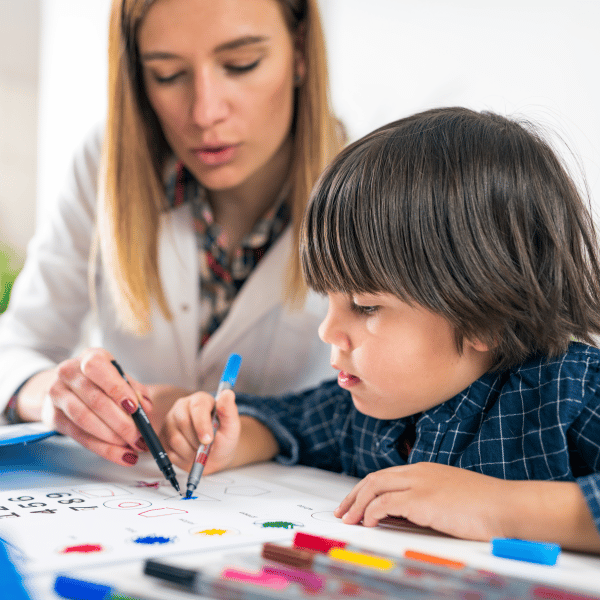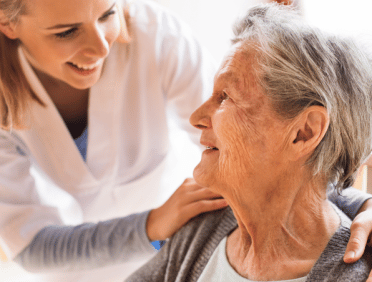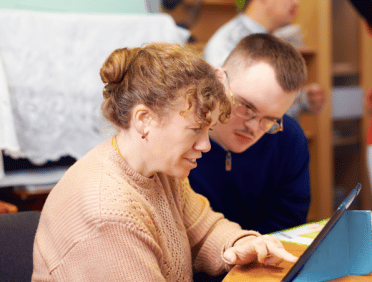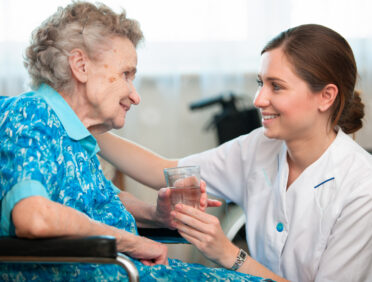This guidance is all about the legislative expectations and requirements placed on individual services for the sake of promoting and safeguarding the welfare of children. It helps to provide a clear framework for safeguarding children partnerships designed to help monitor the effectiveness of local services as they provide support.
The purpose of the guidance is to help professionals understand what their responsibilities and aims are within a safeguarding role. It also helps them to understand what they can expect of other colleagues in the pursuit of safeguarding children. The guidance does this by focusing on the core legal requirements of the role, making sure that organisations and individuals have a clear understanding of what each party should be doing to help keep children safe. Furthermore, by doing so, it helps to create an effective safeguarding system by emphasising the characteristics of a winning safeguarding approach.
The most recent update to the guidelines came in July 2018, and this is widely considered to be the version by which the majority of organisations work.
Why Do We Have Working Together?
The entire purpose of the guidance is for the sake of providing core regulations and regulations for people to take a look at.
If we stop and consider that there are countless vulnerable children and adults who require safeguarding on a regular basis, it’s important to have a uniform policy in place to make sure that every child receives the same standard of care. If you left something like this to the discretion of a local authority or school, then not only with the definition of safeguarding widely vary from one place to the next, but there may be discrepancies and instances where neglect and abuse slipped through the cracks because the school doesn’t have the resources required to be vigilant.
Therefore, the guidance was introduced to provide an official policy for people who are trying to work out how to fulfil safeguarding duties within the confines of a local authority or school. Furthermore, because everybody is working to the same standard, it makes cooperation much easier. The whole purpose of the guidance is to make sure that local authorities can communicate with other areas to provide effective safeguarding measures, and a uniform policy means that everyone has the same facts, information, and resources.
Safeguarding is Everyone’s Responsibility
So, when it comes to safeguarding, there is a generally accepted practice that it is everybody’s responsibility to safeguard vulnerable adults and children. How does this work? We’ll explain.
While it is true that the bulk of safeguarding responsibilities fall to the trained staff who work at schools or within care facilities, it’s generally accepted that everybody has a degree of responsibility when it comes to safeguarding. Anybody who is directly or indirectly in contact with vulnerable parties has a responsibility for safeguarding. Specifically, they need to be able to report concerns regarding safeguarding to the relevant authority.
So, if the parent of a student sees another student experiencing a situation or demonstrating behaviour which they regard as suspicious, they have a responsibility to report this to the school and to ask questions about what is being done.
Organisational Safeguarding Responsibilities
As an organisation, you have safeguarding responsibilities that need to be properly observed.
First of all, the absolute minimum that an organisation needs to do in order to have an effective safeguarding system in place is to designate what is called a safeguarding lead. This person should be properly trained to help them in that role, and the designated safeguarding lead is responsible for keeping the internal records of the company up-to-date, reporting problems when they are discovered, and managing all the referrals to social services made by staff and concerned parties.
Within the context of a small organisation, the designated safeguarding lead is often a management committee member or trustee. Despite the fact that this person will have multiple responsibilities within the organisation, their role as the safeguarding lead should be taken exceptionally seriously and not seen as an additional task to other work.
It’s possible that there are different safeguarding leads for children and adults based on what the organisation may do. Within larger groups and organisations, the leaders are often staff members. The designated lead has to maintain a connection with the local authority to make sure that they remain up to date on the latest processes for adults and children who are at risk. If the organisation frequently works with children and follows the working together to safeguard children guidelines, then there are additional roles and responsibilities to consider. The same is also true if you work regularly with adults who are at risk.
While it is true that one trustee may take the lead with safeguarding, it is the responsibility of all trustees to have a safeguarding awareness and to be able to lead by example. This means demonstrating a commitment to upholding the code of conduct and making sure that every part of the planning process an organisation undertakes is done with safeguarding in mind.
With regards to behaviour, each trustee should try and model the best practices in relation to bullying, safeguarding, good record-keeping, creating a positive and supportive atmosphere where people feel able to report their concerns to volunteers and staff, as well as sexual harassment.
What is Working Together To Safeguard Children 2018?
The “working together to safeguard children” 2018 guidance is official guidance that covers a variety of different things. For example, and places heavy emphasis on the legislative requirements that are expected of local services.
The guidance provides a framework for the three safeguarding partners which exist within a local authority. These are the clinical commissioning group for an area, the local authority itself, and the chief officer of police for an area that falls within the local community. All of these parties have a responsibility to work together to make suitable arrangements for the safeguarding and promotion of welfare of local children and vulnerable adults in the area, which includes identifying and responding to their specific needs and requirements.
The document replaces “working together to safeguard children 2015”, and also provides a framework for the event of a two child death review. This outlines to review partners, who are designated to be the local authority and any commissioning group within that area, and they have arrangements to review all of the deaths of children that are normally present in the local area if they consider appropriate, as well as to review any deaths to children in other local areas are part of an ongoing investigation review.
What Are the Working Together 2018 Update Changes?
One of the most essential changes in the 2018 policy was the replacement of local safeguarding children boards with safeguarding partners.
As per the new guidance, the safeguarding partners consist of three primary agencies. There are local authorities, clinical commissioning officers, and the chief officers of police were appropriate. These partners have to work together to safeguard and protect children, which often means coordinating with relevant agencies from outside the local area. All three of the partners have an equal responsibility in fulfilling the role.
These partners are directly responsible for selecting the agencies that they work with to help protect the children in the local area. These agencies should be listed in the published arrangements for each local area. Educational providers like schools and colleges are expected to be relevant agencies of these partners, and the institutions take a fully engaged statutory duty towards promoting the welfare and safety of children in the area.
The changes also implemented the child safeguarding practice review panel, which has been responsible for overseeing reviews of serious safeguarding incidents that either become viable on a national scale or raise complex issues. This panel is responsible for deciding how lessons are learned on the national scale, while local responsibility remains with the safeguarding partners
As the local safeguarding children’s board have been removed per the latest updates in 2018, the responsibility for a child that reviews now falls to trial death review partners. This is a coordinated effort made up of both local authorities and local clinical commissioning groups.
This new guidance also clearly outlines that a review should be carried out for any children who have died that are residents of the local area, and to explore the deaths of non-resident children who die in the local area if it is appropriate.
Finally, a new section outlined in the change talks about putting a greater emphasis on organisational responsibility for people who work in positions of trust. These changes specifically relate to a lot of educational facilities. Early years providers, schools, healthcare professionals, children’s homes, child carers, as well as social enterprises, voluntary positions, charities, private sectors, and faith-based organisations.
Child-Centered Approach to Safeguarding
When considering safeguarding, it’s important to take a child-oriented approach. Specifically, this means that any decisions or guidance that is created and deployed must be done with the best interests of the child in mind.
Any policies which are created for the sole purpose of protecting children from harm need to be done in such a way that means they are not only compliant with local regulations but also put the welfare of the children above all else.
Keeping Children Safe in Education
Policies which are designed for keeping children safe in education has to be done in conjunction with the local authority and safeguarding partners. Schools have a responsibility to train staff in safeguarding, and to be able to create a proper safeguarding policy which outlines the responsibilities of each staff member in relation to safeguarding.
Staff members of representatives of the local authority, and when children are in school, they are the responsibility of that local authority. Therefore, stars have to be carefully vetted and approved before working with children using modern processes, they have to receive adequate training in order to safeguard children and have to follow a safeguarding policy to the best of their ability at all times.
Statutory Requirements For Children in Need
As outlined by the children act 1989, local authorities are legally required to provide services for children in need for the purpose of promoting their welfare and safeguarding them.
Local authorities have to undertake assessments for the needs of individual children and must take into consideration what services can be provided with regard to the age of the child. Each assessment must be conducted based on the views of the child as well as the family in question, and the feelings and wishes of a child must be taken into consideration when making services. Children should be seen alone by a trained professional where possible.
There are many children who may require accommodation because nobody has assumed parental responsibility for them or because they are lost and abandoned. The child may often be in a situation where the person who is caring for them has found themselves in circumstances where this is no longer possible. As such, the local authority has a duty to provide accommodation for children in need in their area.
Child Safeguarding Practice Review Panel
The child safeguarding practice review panel is an independent panel that commissions reviews of serious safeguarding concerns in children. Their focus is to create local and national reviews that help to improve learning, enhance professional practice, and cultivate more desirable outcomes for children.
The Principles and Parameters of a Good Assessment
The principle of the panel is to oversee and identify the review of serious child safeguarding cases. The panel is used in situations where the cases may present a serious or complex challenge to national safety. In this function, they work with local safeguarding partners to help identify cases, as well as maintain an oversight of the general system.
While it is true that safeguarding partners are able to contact the panel for clarification, the panel cannot provide advice about the interpretation of statutory guidance, which is instead for agencies in safeguarding partners to seek independent legal advice on.
Assessment of Disabled Children and their Carers
The assessment of disabled children and their carers is broken up into two main criteria.
The first condition is that it seems to the local authority that a parent carer might need to seek support or request the local authority to assess their needs for support.
The second condition is that the local authority is satisfied that the care of the disabled child is provided for, and the family of the disabled child of persons for whom they can provide support under the provision of the 1989 act.
Assessment of Risk Outside the Home
Risk outside the home is often called contextual safeguarding, and it’s all about recognising that there are situations outside of the familial setting that can cause harm to a child. There are different relationships that can occur online, in schools and in the neighbourhoods that could present situations where neglect and abuse take place.
Local Protocols for Assessment
The local assessment protocol is all about documenting the key review points and decisions that involve relevant professionals, the child and the family, which should be agreed upon by the local authority in conjunction with all partner agencies for safeguarding purposes.
Accessing Help and Services
Accessing health and services should be freely available to all parties involved in safeguarding. Local authorities should be able to consult with official government representatives to seek further guidance, and people within the local authority should be able to seek support.
Learn Q Provides Safeguarding Training
Learn Q can provide full safeguarding training, which helps to give staff the knowledge and support necessary to make adequate provisions for safeguarding within the school or care setting. This training is vital for remaining compliant with safeguarding legislation.
To download a .pdf of this blog, please click here












